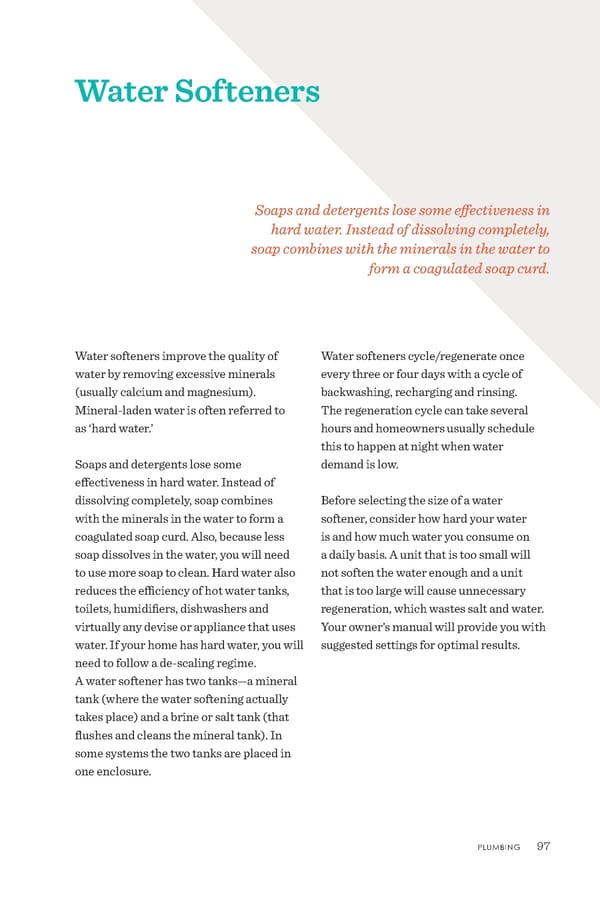Water Softeners Water softeners improve the quality of water by removing excessive minerals (usually calcium and magnesium). Mineral-laden water is often referred to as ‘hard water.’ Soaps and detergents lose some effectiveness in hard water. Instead of dissolving completely, soap combines with the minerals in the water to form a coagulated soap curd. Also, because less soap dissolves in the water, you will need to use more soap to clean. Hard water also reduces the efficiency of hot water tanks, toilets, humidifiers, dishwashers and virtually any devise or appliance that uses water. If your home has hard water, you will need to follow a de-scaling regime. A water softener has two tanks—a mineral tank (where the water softening actually takes place) and a brine or salt tank (that flushes and cleans the mineral tank). In some systems the two tanks are placed in one enclosure. Water softeners cycle/regenerate once every three or four days with a cycle of backwashing, recharging and rinsing. The regeneration cycle can take several hours and homeowners usually schedule this to happen at night when water demand is low. Before selecting the size of a water softener, consider how hard your water is and how much water you consume on a daily basis. A unit that is too small will not soften the water enough and a unit that is too large will cause unnecessary regeneration, which wastes salt and water. Your owner’s manual will provide you with suggested settings for optimal results. Soaps and detergents lose some effectiveness in hard water. Instead of dissolving completely, soap combines with the minerals in the water to form a coagulated soap curd. PLUMBING 97
 ANHWP Care & Maintenance Guide 2022 Page 98 Page 100
ANHWP Care & Maintenance Guide 2022 Page 98 Page 100